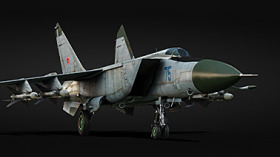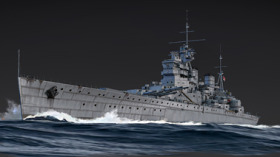
- For PC
- For MAC
- For Linux
- OS: Windows 10 (64 bit)
- Processor: Dual-Core 2.2 GHz
- Memory: 4GB
- Video Card: DirectX 11 level video card: AMD Radeon 77XX / NVIDIA GeForce GTX 660. The minimum supported resolution for the game is 720p.
- Network: Broadband Internet connection
- Hard Drive: 23.1 GB (Minimal client)
- OS: Windows 10/11 (64 bit)
- Processor: Intel Core i5 or Ryzen 5 3600 and better
- Memory: 16 GB and more
- Video Card: DirectX 11 level video card or higher and drivers: Nvidia GeForce 1060 and higher, Radeon RX 570 and higher
- Network: Broadband Internet connection
- Hard Drive: 75.9 GB (Full client)
- OS: Mac OS Big Sur 11.0 or newer
- Processor: Core i5, minimum 2.2GHz (Intel Xeon is not supported)
- Memory: 6 GB
- Video Card: Intel Iris Pro 5200 (Mac), or analog from AMD/Nvidia for Mac. Minimum supported resolution for the game is 720p with Metal support.
- Network: Broadband Internet connection
- Hard Drive: 22.1 GB (Minimal client)
- OS: Mac OS Big Sur 11.0 or newer
- Processor: Core i7 (Intel Xeon is not supported)
- Memory: 8 GB
- Video Card: Radeon Vega II or higher with Metal support.
- Network: Broadband Internet connection
- Hard Drive: 62.2 GB (Full client)
- OS: Most modern 64bit Linux distributions
- Processor: Dual-Core 2.4 GHz
- Memory: 4 GB
- Video Card: NVIDIA 660 with latest proprietary drivers (not older than 6 months) / similar AMD with latest proprietary drivers (not older than 6 months; the minimum supported resolution for the game is 720p) with Vulkan support.
- Network: Broadband Internet connection
- Hard Drive: 22.1 GB (Minimal client)
- OS: Ubuntu 20.04 64bit
- Processor: Intel Core i7
- Memory: 16 GB
- Video Card: NVIDIA 1060 with latest proprietary drivers (not older than 6 months) / similar AMD (Radeon RX 570) with latest proprietary drivers (not older than 6 months) with Vulkan support.
- Network: Broadband Internet connection
- Hard Drive: 62.2 GB (Full client)
What can we do now?
Interaction with the terrain and changing its shape is one of the main features of the upcoming "Ground Breaking" update. This is an additional element of interactivity that diversifies the gameplay in War Thunder tank battles. Soil, sand and snow are now not only authentically crushed under the tracks of tanks - you can dig out shelters, and bombs leave huge craters! Ramparts and craters will now create cover for vehicles and can seriously change the usual routes in War Thunder locations - both for you and the enemy team.
Ground vehicles and dozer blades
Many armies of the world make use of dozer blades on tanks. For example, in the Soviet army, from the T-72 onwards, equipment for self-entrenching was installed on all main battle tanks and some armored vehicles, and a corresponding standard appeared in the training of tank crews. Many western tanks have dozer blades both in the basic configuration and in modifications for street fighting or engineering purposes. Dozer blades and tank shovels are present on many ground vehicles in War Thunder as well, and in the "Ground Breaking" update, all of them will receive an animation of the blades sinking into the ground. Using the entrenchment equipment players will be able to quickly build tank trenches anywhere in a game location, where there are no buildings, rocks, boulders, ice or paved roads around.
Entrench!
Put the dozer blade down and rake an earthen dugout in front of you. Take it back and repeat the procedure again and again. When self-entrenching, the speed of the tank decreases due to the lowered blade, so it is advisable not to be seen by the enemy during mining operations. A few rolls - and the trench is ready. A long-term firing position with a tank inside appears literally in an open field: be it the Kursk steppes, the pastoral fields of the Maginot Line, the sands of desert maps or the snowy plains of winter locations. The tank hides its vulnerable hull, meeting enemy fire only with a turret. In addition, a tank hiding in a trench is much more difficult to hit! However, the earthwork is not an absolute shelter - you can penetrate it with a powerful kinetic or shape-charged projectile, but the thicker the earthworks are, the more difficult it is to get through.
Bomb craters
Now ammunition with a significant mass of explosives leaves craters on the soft terrain in tank locations. Air bombs weighing approximately 50kg or above, heavy rockets and missiles form a pit, the diameter and depth of which depend on the mass of the explosives. For example, a small armored car or self-propelled gun will fit into a crater from a 250kg bomb, and a crater from a 5,000 kg Pe-8’s “Tzar Bomb" will easily cover several heavy tanks at once. In the bomb craters you can hide from enemy fire, and lifting from the bottom of a deep hole to its rim can become a problem for vehicles with poor off-road performance. Explosion craters can significantly affect gameplay, making it difficult to access certain positions or providing cover in open areas.

_4bbd553d5f7964dfd08891c3a33e7654.jpg)
_5922efb1169d2def5798ab832c8d4073.jpg)




Comments (96)
''a problem for vehicles with poor off-road performance'' You mean literally all of them for quite some time now? '' ammunition with a significant mass of explosives leaves craters on the soft terrain'' Sounds like a buff for the strongest vehicles in the game already, giving even more power to CAS, and the CAS nations like US that heavily rely on bombs and acts as a nerf to the nations without access to bombs like Japan and such.
Didnt Japan receive JDAMS?
Betoniarka150L, Yeah, American JDAMS before the Americans get it in game. Like the F-5 and doppler radar. How backwards is that?
Super excited! Hopefully we can see a buff in our tracks? They are buttery atm and this will make the gameplay even more immersive
i guess its time to add TU-4 or B-29 to my lineups and just carpetbomb
Why is the repair cost of a TU-4 $15,000 SL less than the B-29 when it has way better guns? Is this solid proof of Russian Bias in the game?
chevyed20, Yeah.... it is, along with just about every other repair cost in the Russian TT compared to everyone else's
Does this mean traction and wheels will be fixed?
Ground mobility has never been important until they added tanks with mobility then they took that away with less traction. This game has completely lost the idea of being realistic.
I just wanted my traction back, mbt's shouldn't have problems with slopes or trenches and yet here we are
While there are some neat features being added on this update, I want to know why Gaijin is forcing the wagers and back ups on players inventories to now expire. Update on update all I see are changes that make the games economy more difficult to navigate and less friendly to players.
You just answered your own question
The fucking WAGERS TOO!!!!? WHAT THE HELL.
"All newly obtained universal back-up vehicles, orders and wagers will now have validation time to be activated and expiration time (for orders). All relevant data added to their description. Attention: all previously obtained universal back-up vehicles, orders and wagers to be used within a lengthy period of time, as now stated in their description." Just, don't.
GO TO THE FORUMS AND TELL THEM NOT TO TAKE OUR UNIVERSAL BACKUPS AND WAGERS!!!!! Tell them how much the economy is trash and they need to stop making it worse. This is ridiculous.
Can we get some idea of what vehicles will be given Dozer Blades? How will the be unlocked? Will we see some more engineering vehicles added like the M728 (the M60A1 w/ the 165mm)?
Yeah sure I can answer that for you from the article. This is basically all you need to know, there will no longer be a weak LFP on any Russian MBT's. "For example, in the Soviet army, from the T-72 onwards, equipment for self-entrenching was installed on all main battle tanks and some armored vehicles". Basically they created a "Game Mechanic" that magically does away with the biggest weak spot on Russian MBT's and other modern Russian vehicles. Purely coincidence, totally not done on purpose.
Can we get the friction of the tracks back to the way it was before now?
Probably not. I imagine we will in the crater, but not overall. Still won't be able to use the mobility of our tanks like we should be able to. Can't have too many lazy cry babies complaining about new shooting locations they aren't familiar with.
chevyed20, I honestly believe, after the MBT-70/KPZ-70 came out, and people put their mobility to use, ended up killing a Dev who got pissed and nerfed traction to what it is now. I've not noticed such a big change happen so fast when it was the players complaining.
Submit a complaint